In the current back-breaking inflation in Pakistan electricity prices have shot up staggeringly, doubling from what they were the past year. An average household’s monthly utility bill far exceeds the average household’s monthly income. To aggravate the situation is the interminable load shedding across the country. In a bleak situation as this, when the government fails its responsibility to its people to provide them the most basic amenities, people seek out alternatives resources in order to make daily existence bearable. Clean water, security, or utilities like gas and electricity are not accessible to the majority of Pakistanis who are now also grappling with a soaring cost of living.
When potable water was not accessible, people started using bottled water for drinking. When load shedding became the norm, people shifted to generators or UPS (uninterruptible power supply) systems in their homes as well as workplaces. Today, when the rates for fuel have gone up by more than 150 percent, people are opting for solar panels in their homes to shield themselves from exorbitant electricity bills issued by the government-run power suppliers and to maintain a steady supply of electricity to function in all aspects.
Ebad Alam, a resident of Karachi, recently moved with his family of eight into a new house. He estimates his electricity bill has shrunk substantially since he installed solar panels in the new home. “The average bill of our household was between 50,000-60,000 rupees a month which has been decreased to less than half now,” he said. The system that Alam has installed can easily run five ACs at a time, if they are inverters, while three normal ACs can also operate on the same solar energy supply.
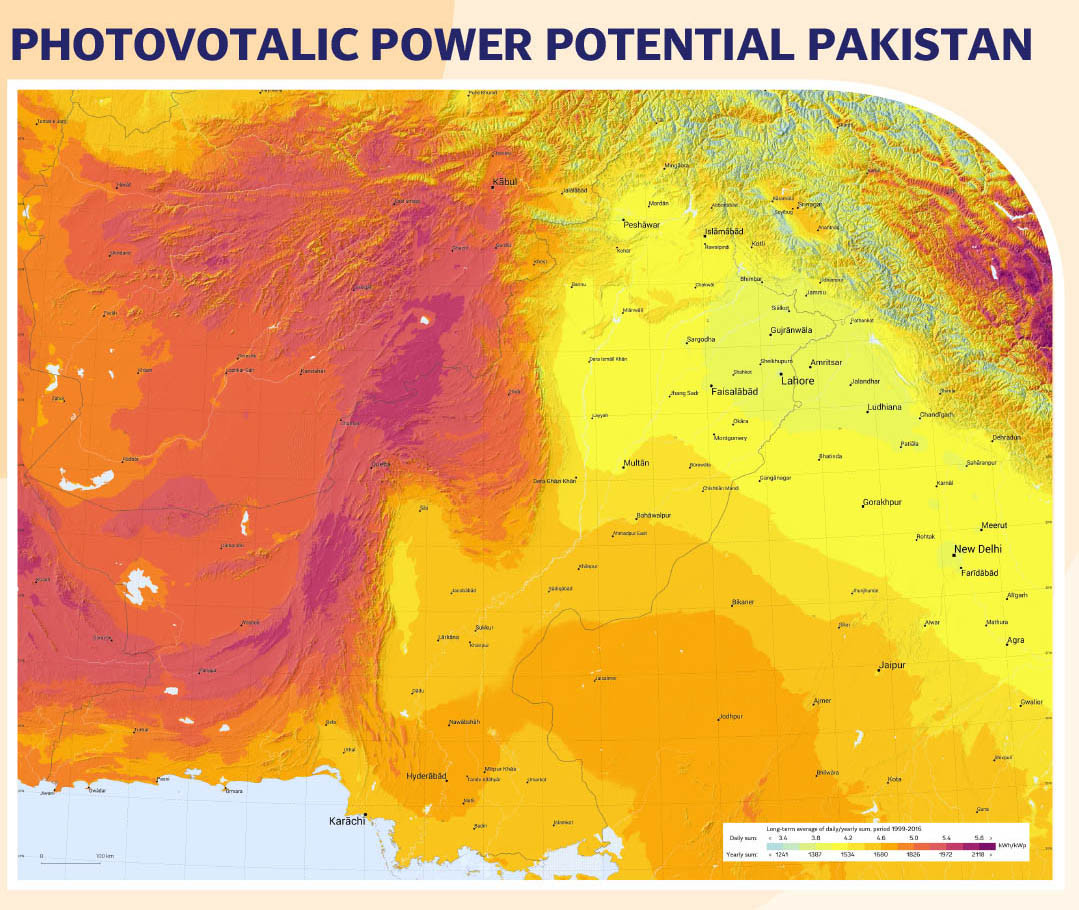
How suitable are solar panels for Pakistan
Solar energy turns sunlight energy directly into electricity via photovoltaics (PV) or indirectly via concentrated solar power. Solar energy is a clean and sustainable energy source that emits no greenhouse gases or air pollutants during the generation of power. Adopting solar energy can assist Pakistan in reducing its carbon footprint and combating air pollution, which is a major concern in many of its cities.
Pakistan’s geographic location is a plus point for solar technology. The country is located at latitudes 23°35′ to 37°05′ N and longitudes 60°50′ to 77°50′ E, an aerial belt that receives a large amount of daylight which can produce around 95% energy during daylight hours (8 to 8.5 hours per day). We also have 185 to 290 sunny days per year.
The boundary's horizontal surface receives a mean global irradiation of 200 Watts to 250 Watts per day, leading to 1,500 to 3,000 hours of sunshine per year depending on location. This quantity, according to estimates, is enough to power more than 40,000 settlements.
Receiving all this sunlight all year round, Pakistan has 2.9 million MW of solar power potential, making it a viable source of energy to tap for producing power.
The cost of solar technology has steadily decreased internationally, making renewable energy sources more economically viable. Pakistan can capitalise on this trend by investing in solar systems and lowering overall electricity production costs to provide energy to the country. “Currently, people are looking for a substitute to electricity as paying 50,000 rupees to 100,000 rupees in bills is making survival difficult. But customers come to get quotes and find the installation cost too much to bear in the current inflation,” said Muhammad Hasan Khan, who is a sales head of a solar company.
Harnessing solar energy lessens Pakistan's reliance on imported fossil fuels, which are expensive and volatile on the international market. This improves the country’s energy security by minimising disruptions in the energy supply. “Solar can help in many ways but the ban on import has made it difficult for people,” said Khan. “The prices of solar panels have skyrocketed. For example, if the installation of 10KVA cost 1.5 million rupees three years back, it is now costing 3.5 million rupees. In the current economic scenario, we can’t even promise the same rates for next month.”
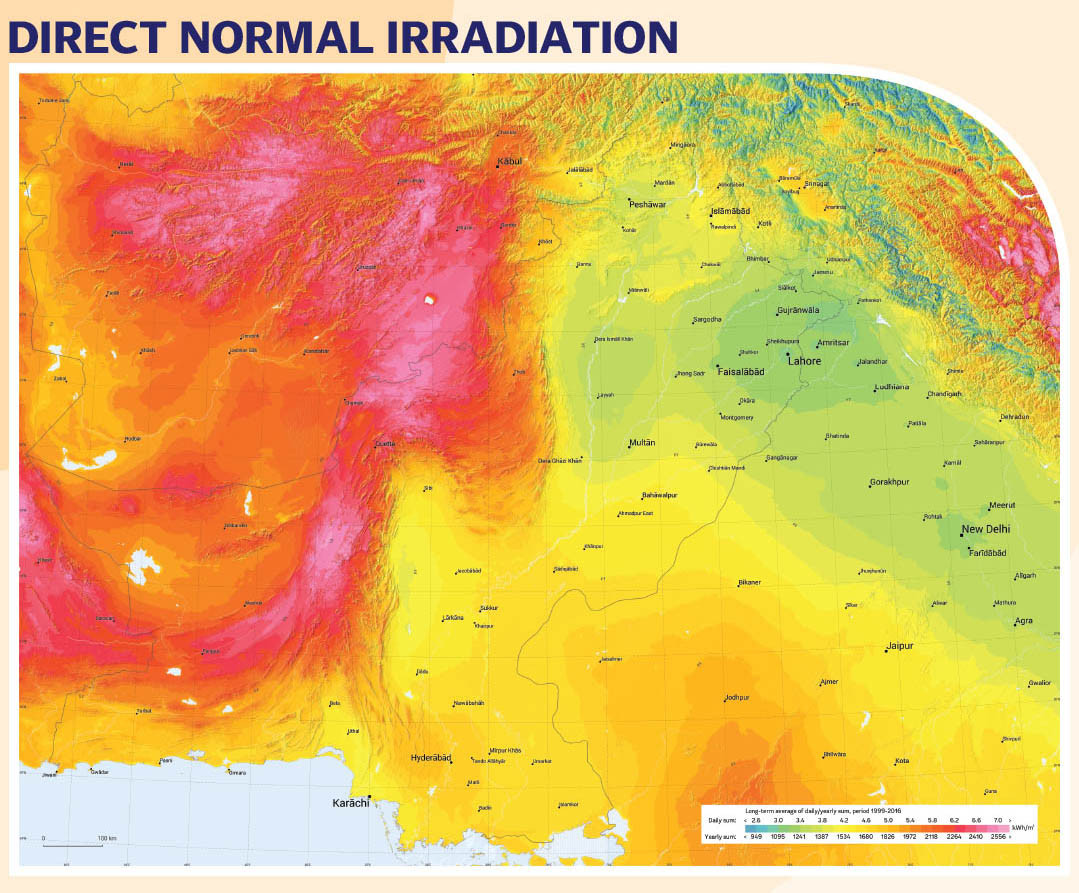
How solar energy can save money
Six months ago, Alam shifted to a newly constructed house on 300 square yards property which is bigger than his previous residence. His family includes two married brothers with their families living separately on a floor hence electricity consumption was more with the numbers of AC and refrigerators in the house. “We decided to get solar energy and checked with a few vendors,” said Alam. “One of them offered us better rates and an understanding of the system. We obviously also did our homework about the technology before opting for it,” shared the 23-year-old, adding that the company suggested a 6.2 KVA system for their household after calculating their total consumption, but Alam’s family opted for a hybrid solar installation and left a few electronic appliances hooked to the K-electric supply.
There are two main types of solar installations: grid-tied (on-grid) solar systems and off-grid (or standalone) solar systems. These installations perform various functions and have distinct characteristics. Grid-tied solar systems are linked to the local power grid. They work in tandem with the grid, acting as a backup source of electricity when solar production is insufficient. Unless additional equipment is included, grid-connected devices frequently do not incorporate battery storage. This means that unless a backup generator or battery system is incorporated, they cannot provide electricity during power outages.
Off-grid solar systems, which are also called hybrid, are completely independent of the power grid. They are intended to provide power that is not connected to the grid. Battery storage is included in off-grid systems to store extra energy generated during the day for usage at night or during cloudy times. Batteries are essential for maintaining a constant power source. “We chose hybrid because given the situation of Karachi we never know about load shedding and then it can be a hurdle as we have elderly people in the house as well,” shared Alam. He also said that the cost of 6.2 KVA was 1.7 million rupees which could have been 1.1 million if they had gone for an on-grid system.
The difference between grid-tied and off-grid solar systems is influenced by a number of factors, including location, energy requirements, budget, and desire for energy independence. Grid-connected systems are more frequent in urban and suburban regions where grid access is easy to come by and net metering is a possibility. Off-grid systems are common in rural or off-grid areas where self-sufficiency and dependability are essential. Hybrid systems that blend grid-connected and battery-backup parts are also becoming more common. “We changed all the fans in our house to AC/DC just to make the most of the system installed, as normal fans would consume more power while AC/DC fans consume only 12 watts. As we shifted to a new house, we had to buy a fridge so we bought an inverter refrigerator so somehow the whole system started falling into place,” Alam shared adding that they clean the panels twice a month as suggested by the company and they were recommended not to put load of more than 4.5-5 KVA on their system to enhance the efficiency and performance.
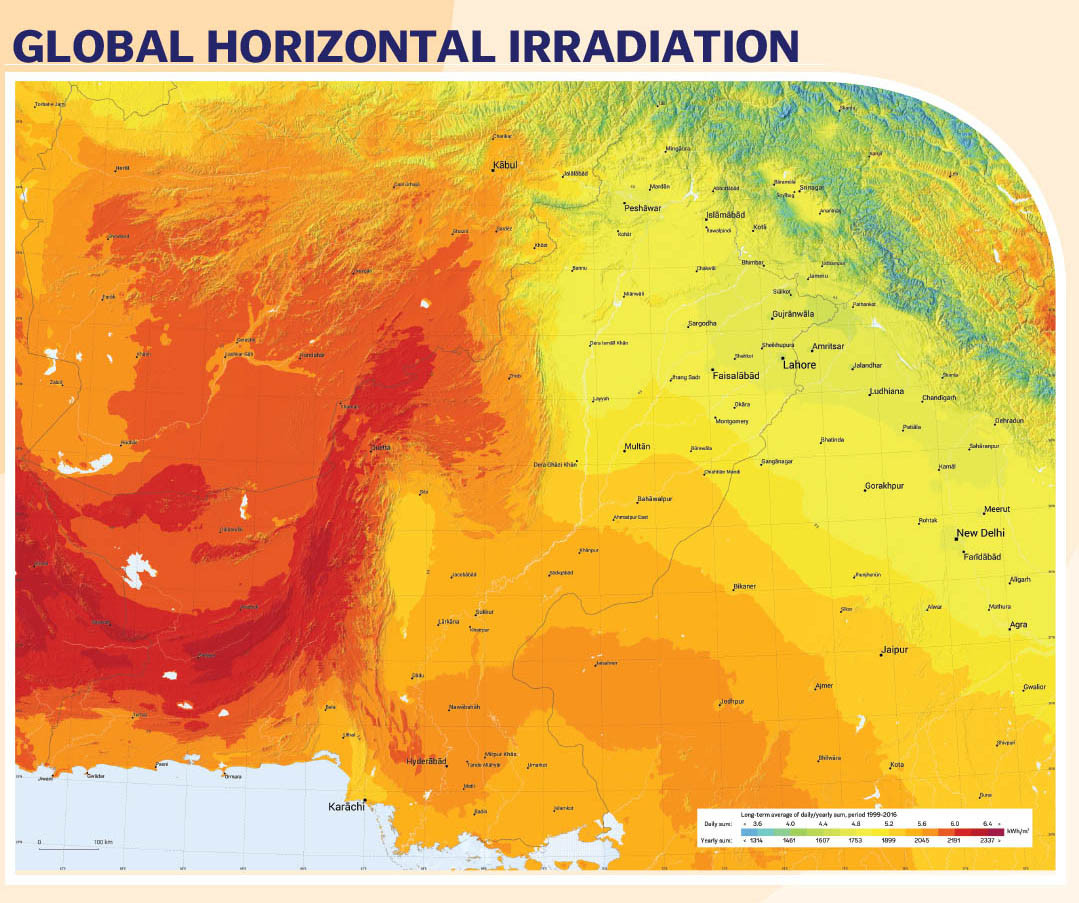
Pakistan’s solar market
Pakistan’s Solar Energy Market is estimated to increase at a compound annual growth rate (CAGR) of 49.68% from 1.30 gigatonnes in 2023 to 9.77 gigatonnes in 2028.
The solar energy market in Pakistan suffered as a result of interruptions in the supply chain during the pandemic, project delays, and manufacturing bottlenecks. “The market not only suffered but has also seen people wanting the technology,” Khan explained, “but due to taxes, the ban on imports, and high cost, it feels like a luxury. This should not be the case. Across the world, people are shifting to renewable energy systems. However, despite having favourable conditions, we can’t grow in the field due to several other factors.”
Condusive government regulations, increased use of solar PV systems, lowering solar panel and installation costs, and growing awareness of environmental concerns about the use of fossil fuels are the factors driving the market's growth in the short term. Transmission and distribution losses, a lack of a well-defined renewable energy policy, and unpredictability in power supply continuity are expected to impede the growth of the market.
“People will believe in the system more once the calculation is made easy for them. If a middle class person is paying 50,000 rupees a month in bills, in what time period can they recover their one-time investment [in solar]? The cost of batteries and cleaning are just maintenance and not costing every month to the consumer,” said Khan.
The Pakistani government has set a few goals such as obtaining 30% of the country's power from renewable sources by 2030. To fulfill these goals, the government is aiming to build solar-generating facilities across the country through the Alternative Energy Development Board. Pakistan's total solar installed capacity was 1.24 GW in 2022, representing a 17% increase over 2021. The government has proposed many initiatives to increase the share of solar energy in the country.
The Pakistani government approved the National Solar Energy Initiative in September 2022, with the goal of producing 10,000 megawatts (MW) of electricity from solar energy projects in the coming months. The project intends to cut the country's import expenditure for expensive diesel and furnace oil, thereby stimulating demand in the country's utilities sector. As a result, the government is expected to create more utility-scale projects, boosting the renewable energy mix in order to meet its targets. Based on these initiatives, the utility sector will most likely be the most important player in Pakistan's solar energy market in the near future.
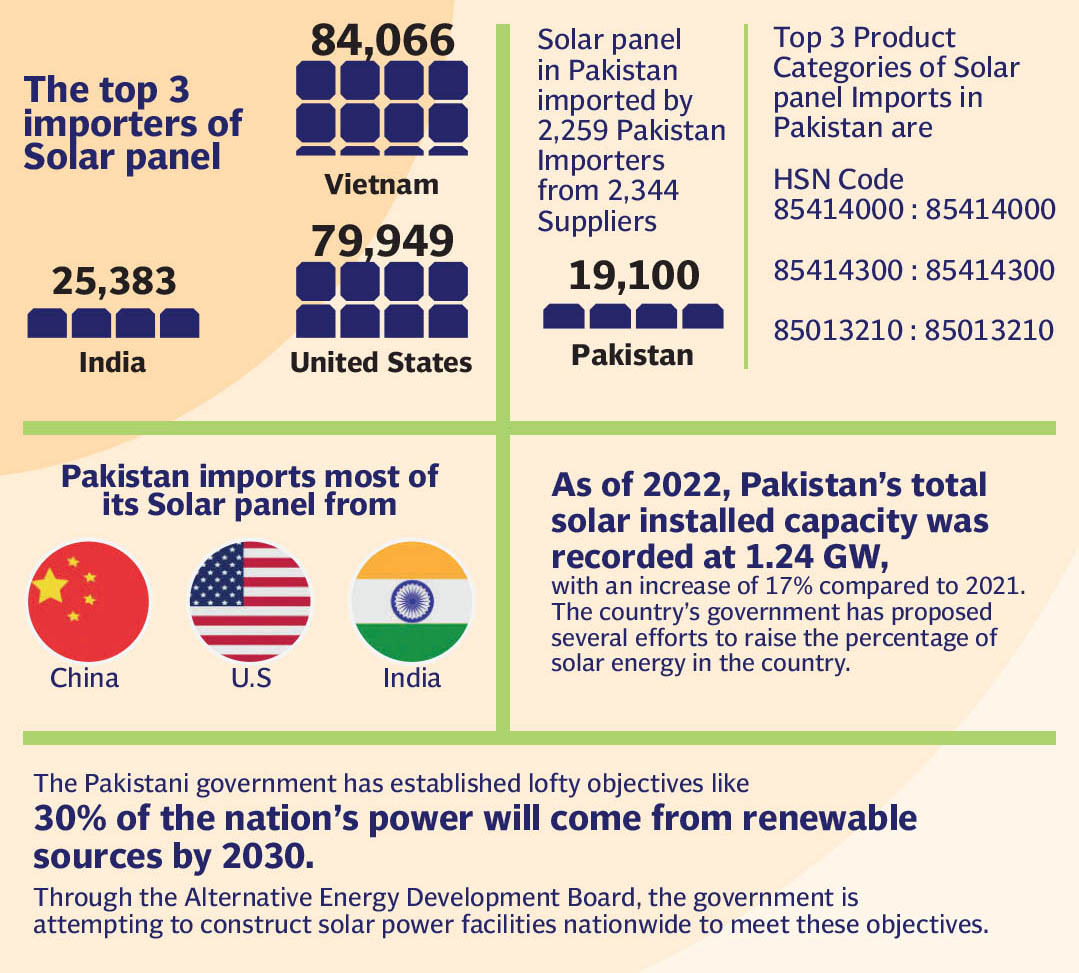
Reducing the carbon footprint
Solar energy is a clean and sustainable energy source that emits no greenhouse gases or air pollutants during the generation of power. Adopting solar energy can assist Pakistan in reducing its carbon footprint and combating air pollution, which is a major concern in many of its cities. “There is no doubt that technology is helping in sustainable energy but it requires consistent cleaning so that it can provide better results in terms of efficiency and durability,” Khan shared, adding that everything required maintenance including solar panels.
However, solar panels have a long lifespan and require little maintenance, making them a long-term, sustainable, and stable source of electricity. Solar power can help stabilise the national grid by supplying extra power during high-demand hours, and minimising the risk of blackouts.
The maintenance of batteries is a cost that one has to bear every two years. “The system installed in our house requires four batteries which each cost around 70,000 rupees and have a life of two years, which means after two years, we have to get them changed and that will cost 240,000 rupees. However, the old batteries can be resold for 30,000 rupees each,” Alam explained. He added that one can install used batteries too but that is at the cost of efficiency of the system. The batteries used in the installation are lithium-ion batteries which are highly efficient.
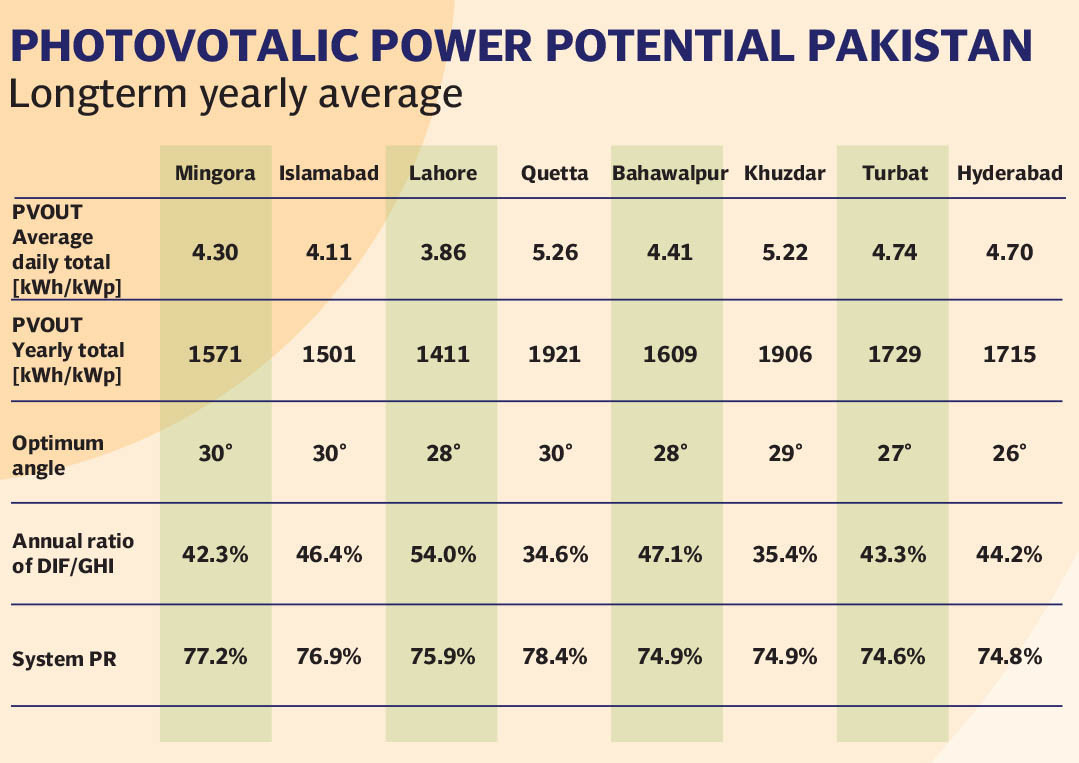
Small installations
Danish Zaheer, a resident of Korangi, who has installed two solar plates in his two-roomed home. “I installed it with the help of my friend who works at a shop that sells solar plates. We fitted it ourselves because we don’t have the kind of money to hire a company to install it,” 41-year-old, Zaheer told The Express Tribune. “The load shedding situation in Korangi is unbearable. So I decided to install two plates so that when the power goes out at least we can have a fan during the daytime and a light on when required at nighttime.”
Zaheer is a married man who works in a small company on a 35,000 rupees monthly salary. His mother is bed-ridden and he is the sole breadwinner for his family. “We have load-shedding for 2.5 hours thrice a day. Sometimes, other than these set times as well. Given that we live near an industrial area, the gas shortage has been a norm for years so a generator wasn’t an option for me. I thought that maybe just a fan and light can help ease my wife’s and mother’s life,” he lamented.
Six years ago when solar panels were not that common, Zaheer’s friend informed him about the technology. At that time, one plate cost around 6,000 rupees and it could generate enough power to run one fan and light for six hours straight. “I have a fitted wall-mounted fan just above my mother’s bed which is connected to the panel. Other than that, one light in the main corridor is on solar, while all other equipment in the house is on K-electric supply. I have also attached a small battery with it which I had bought in used for 3,000 rupees. The same battery cost me 20,000 rupees two months ago when I had to change it,” he explained. Expenses aside, with worsening load shedding, he said it is good to have some alternative relief. “All in all, I think some alternative is better than not having any solution in times when sometimes we don’t have power supply for more than 12 hours a day.”
Since Alam installed solar panels in his home, he says his family doesn’t have to think twice before switching on their ACs whereas before even switching on the fans and lights was done with great caution. “It's better that we don’t have to think before consuming electricity due to the huge bills. In the summer, we had guests over and all the ACs in the house were being used. The bill came to 27,000 rupees as the ACs which were not on solar were on almost 16-18 hours a day,” he said. “We are getting bills because we have kept few items on power and not on solar but there are people who are using it full-fledged and they get zero bills. It is workable in the longer run because then one can save money and also not worry about power usage and hefty bills.”
